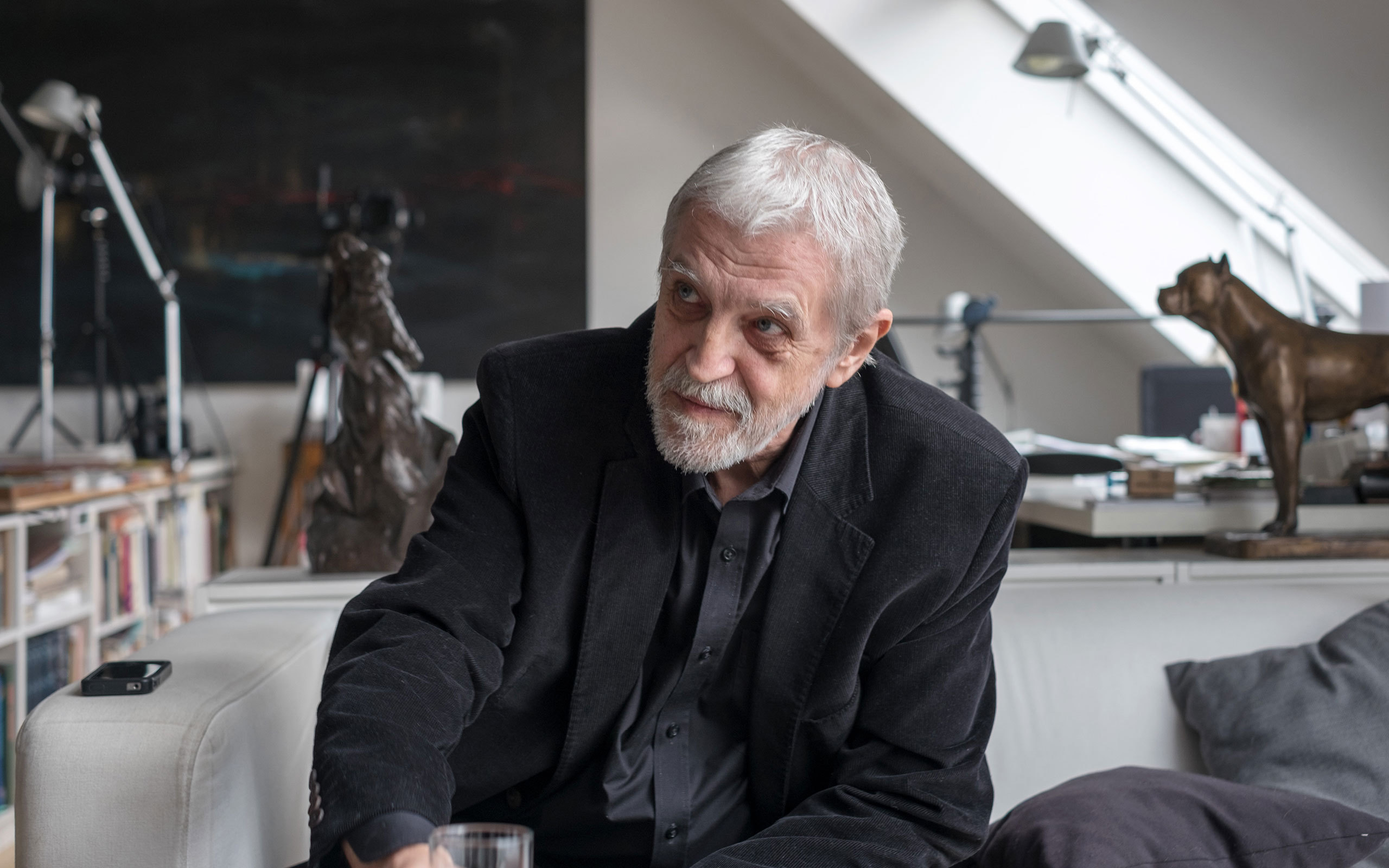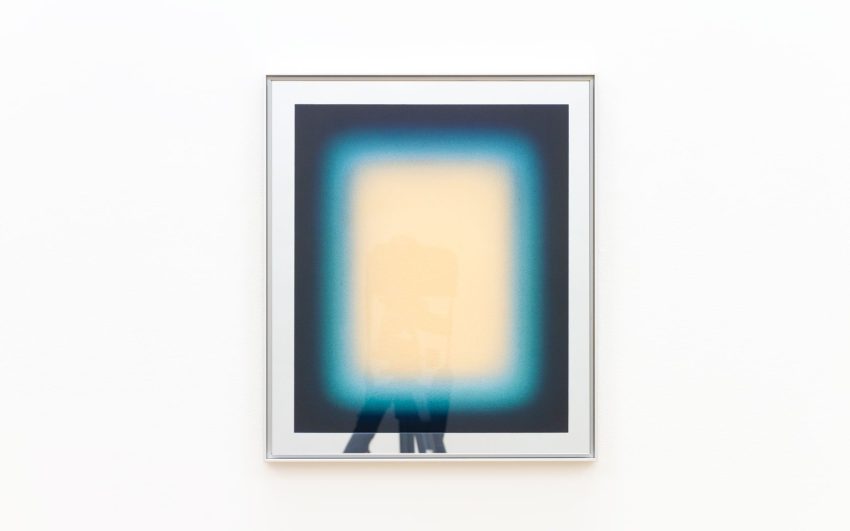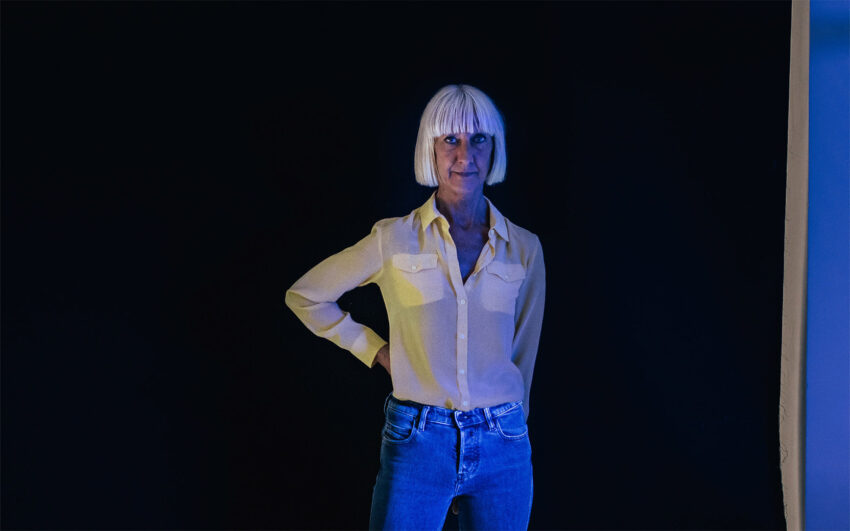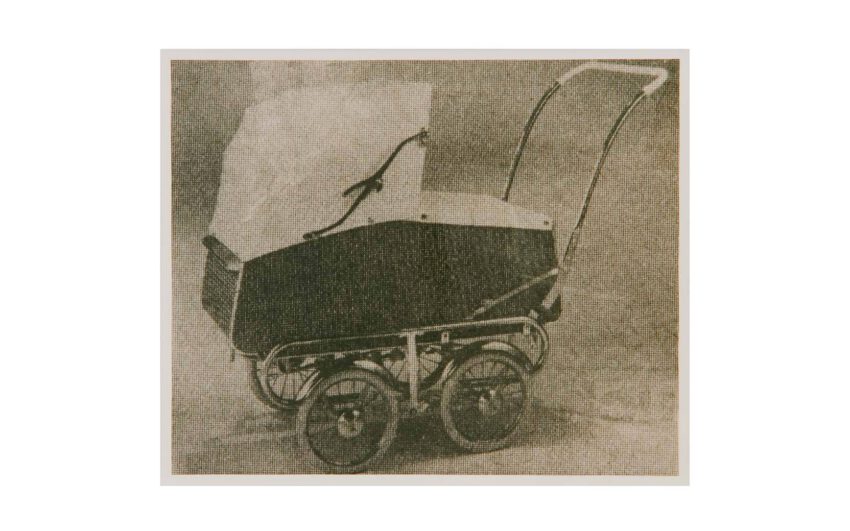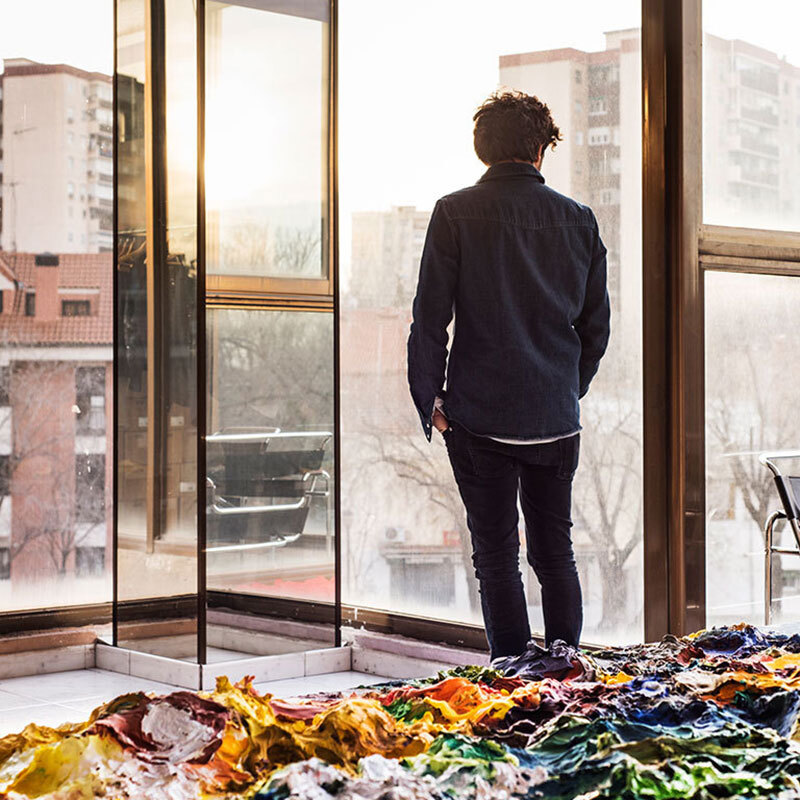Married to famous documentary filmmaker Helena Trestikova and father to Tomas Trestik, one of the leading Czech photographers, Michael Trestik is a person of public interest himself, with an interesting biography. Originally trained as an engineer and architect, he has made a career as a writer, a publisher, an art critic, a literary critic, and a filmmaker, working with his wife Helena. He is also a passionate collector of antiques, ceramics, and art. We met Michael Trestik in his home above the rooftops of Prague’s Letná district and talked with him, among others, about his passion for collecting, why he is now divesting of his collection nonetheless, and what motivated him lately to trade in his pencil for an artist‘s crayon.
Mr. Trestik, you have worked in so many professions, as an architect, a writer, an art critic... The list can be easily continued.
That’s right, different events in my life have let me enter all these professions. And you can add ‘art dealer’ to the list. (laughs) I have started an online store for antique pieces, jewelry, and art. I think it is rewarding to try out different things in life. I have been lucky in my life to be able to choose what ever I felt compelled to do.
Where does your interest in art originate?
It started very early in my childhood. I grew up in a family in which art has always mattered. Although neither of my parents were visual artists, both had an artistic disposition: my father was a composer and a pianist, and my mother was a philologist. They took me to art shows early. I suppose this is how it all started. Much later, I have received some art educational training to become an architect.
Art is very present in your apartment, and one can immediately see that art has been a part of your life for a long time. Can you tell us something about your collection?
My collection consists mainly or, on second thought, even exclusively, of works by Czech artists. Although I’ve always had a great interest in international, especially American art, I felt I could develop a more personal and deeper connection with the artists of my own country.
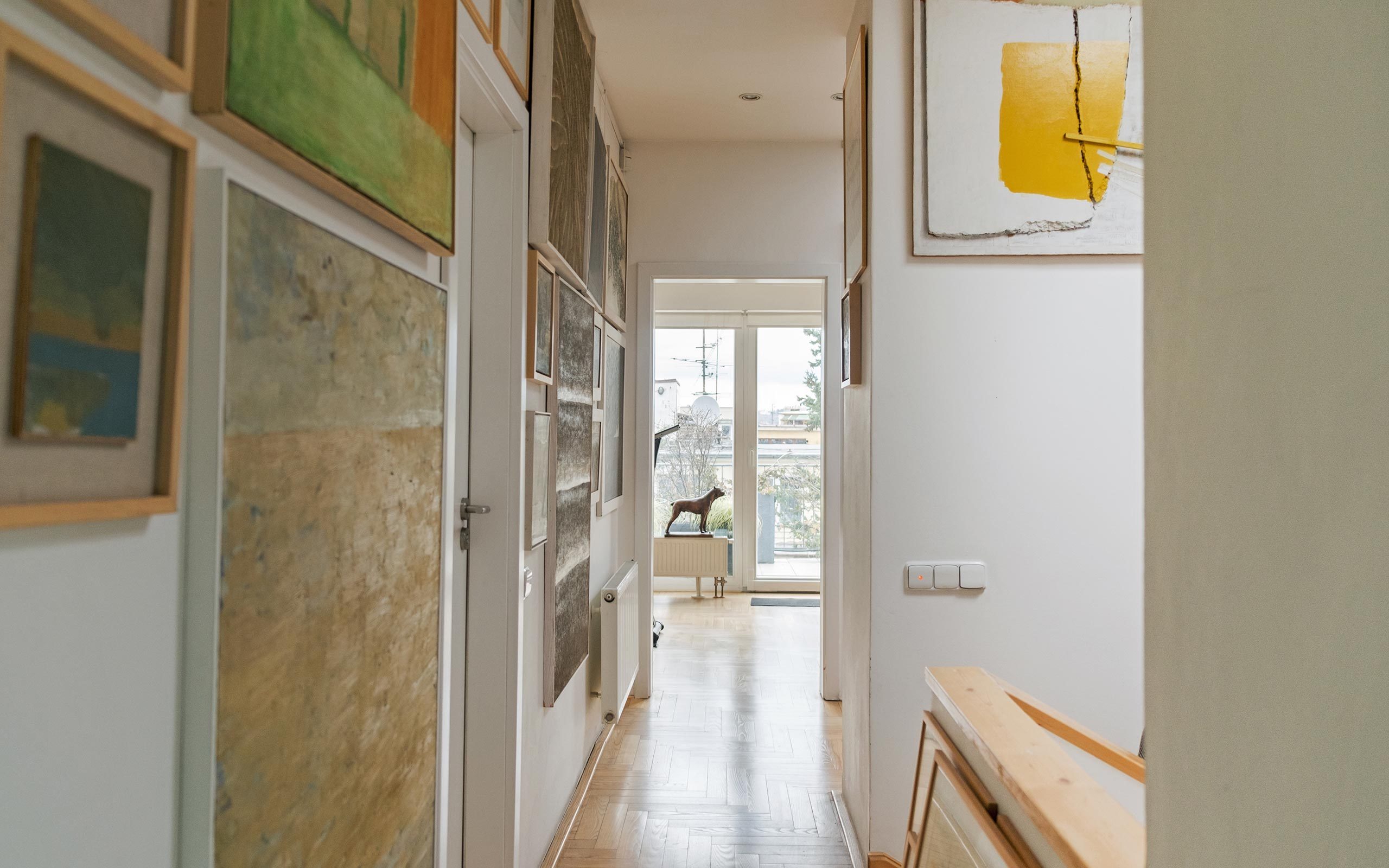
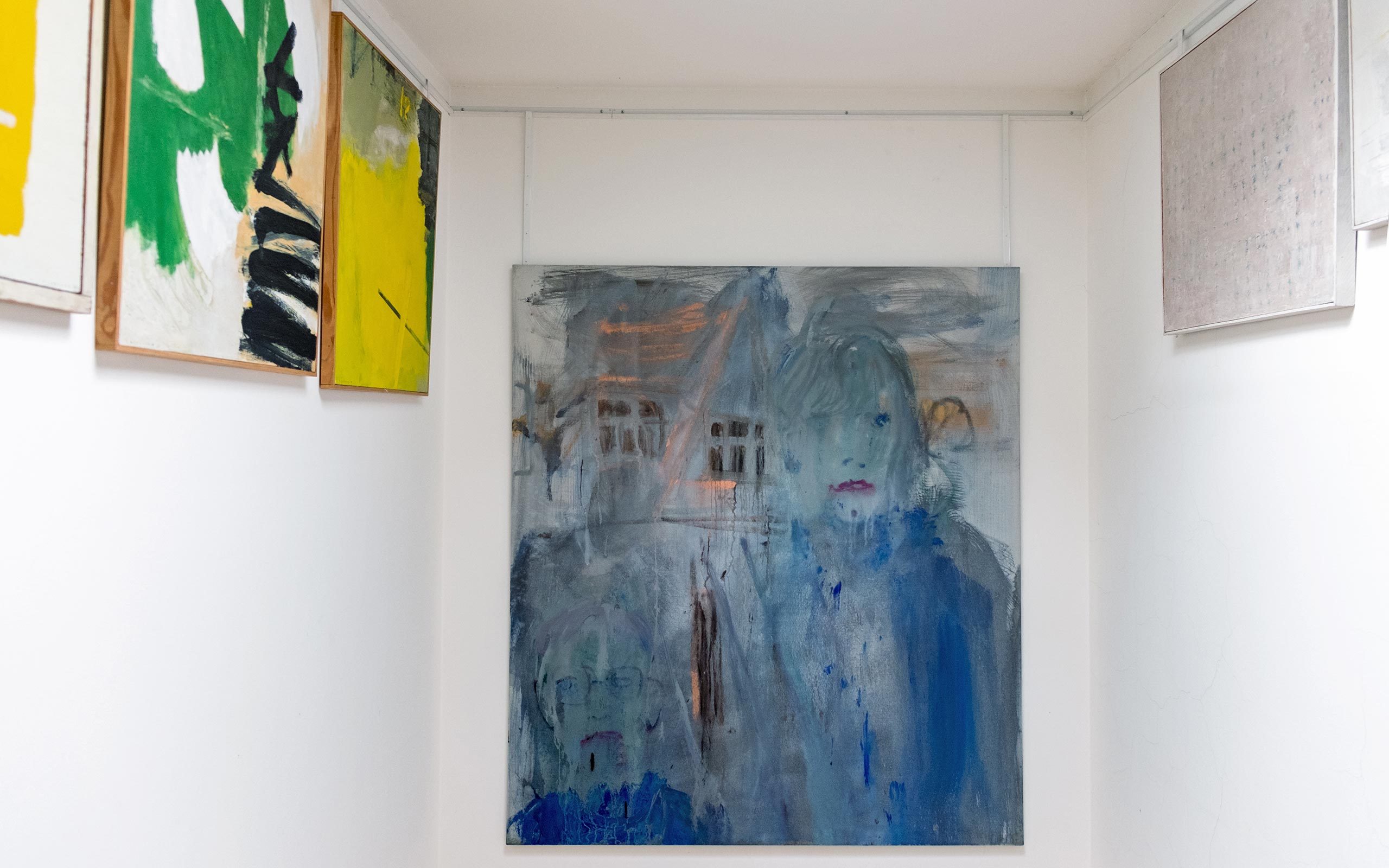
Can you remember which piece marked the beginning of your collection?
That’s kind of a funny story. When my wife and I got married, my colleagues wanted to buy us a wedding gift. At the time, it was fashionable to give these horrible polished glasses, which I wanted to avoid at all cost. So I asked them whether they would mind buying us a piece of graphic art, a suggestion that was less motivated by my appreciation for that particular artistic genre, but rather by the mundane idea that I could hide the piece more easily if I didn’t like it. (laughs) But they turned the tables asking me to pick something myself. I chose two graphic works by Emilie Tomanova, who at the time was already an established artist. They were two graphic illustrations of my and my wife Helenka’s zodiac signs. The zodiac has twelve signs and it may sound strange, but having two signs made me want to complete the entire cycle.
Did you continue to collect only the big names among Czech artists, or what was your concept?
At first I continued with established artists like Zrzavý or Tichý buying drawings and prints. But in time, the idea to simply follow in the suggestions of other people, who discovered established artists for me, was no longer attractive. I began to take greater interest in the artists of my own generation, looking at contemporary painting. When my novel Zdi tvé had been published, I received an honorarium, which I spent entirely on works by artists of my own generation. As time went by, my editors asked me whether I would write a book on this young generation of emerging artists. In the process of writing the book I immersed myself deeper and deeper in the Czech contemporary art scene. And, to the degree I was researching and writing, my appreciation for contemporary art grew.
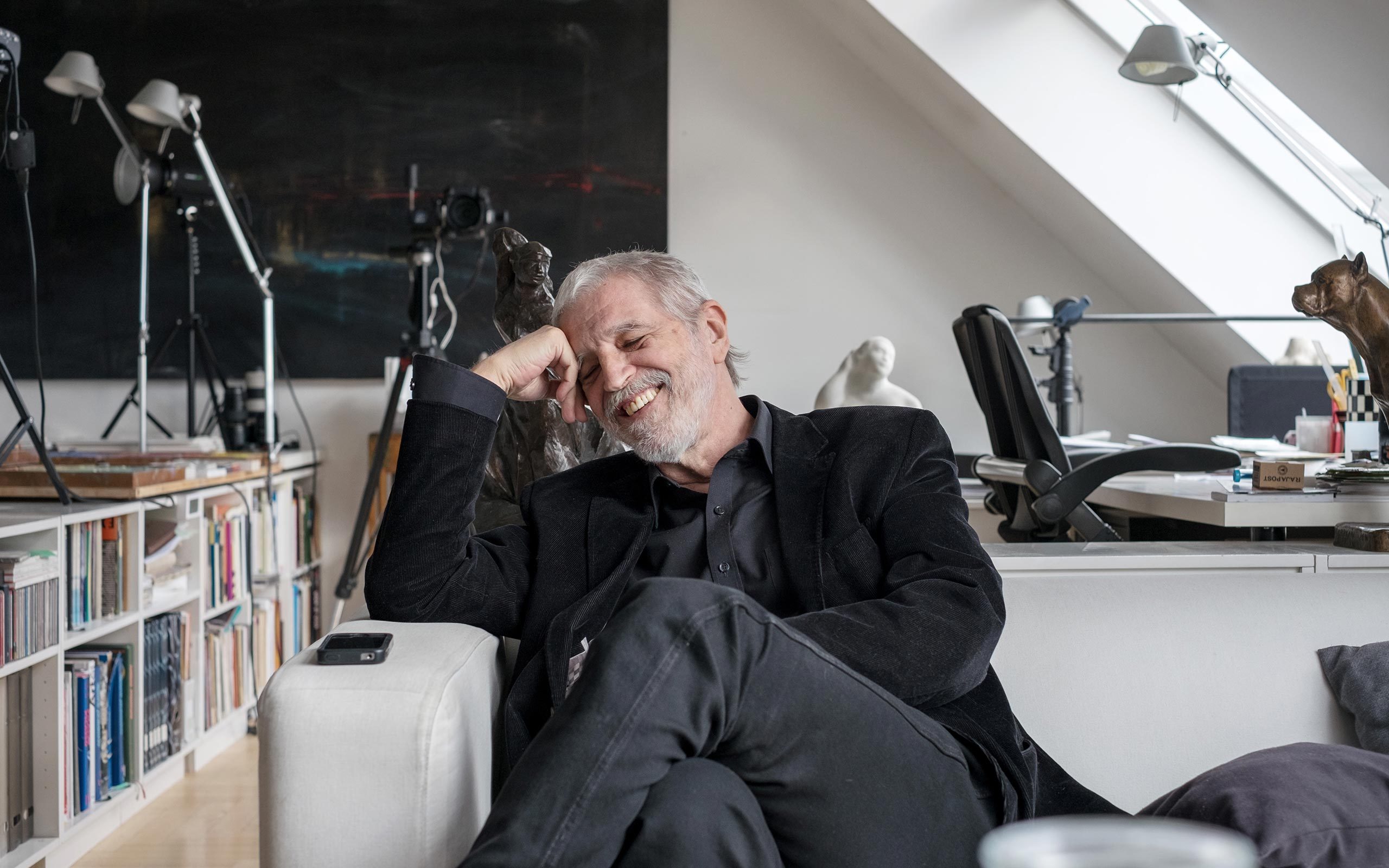
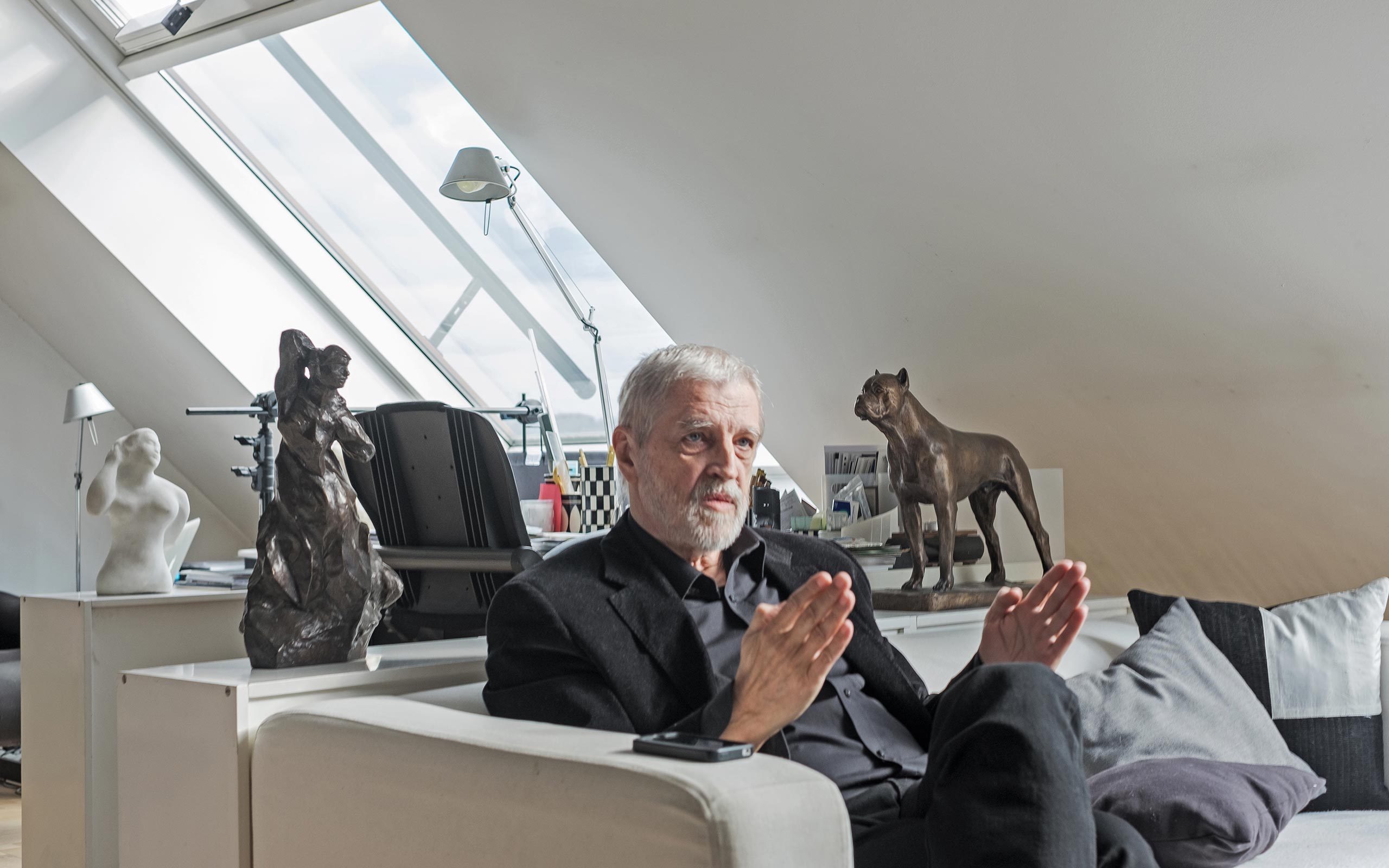
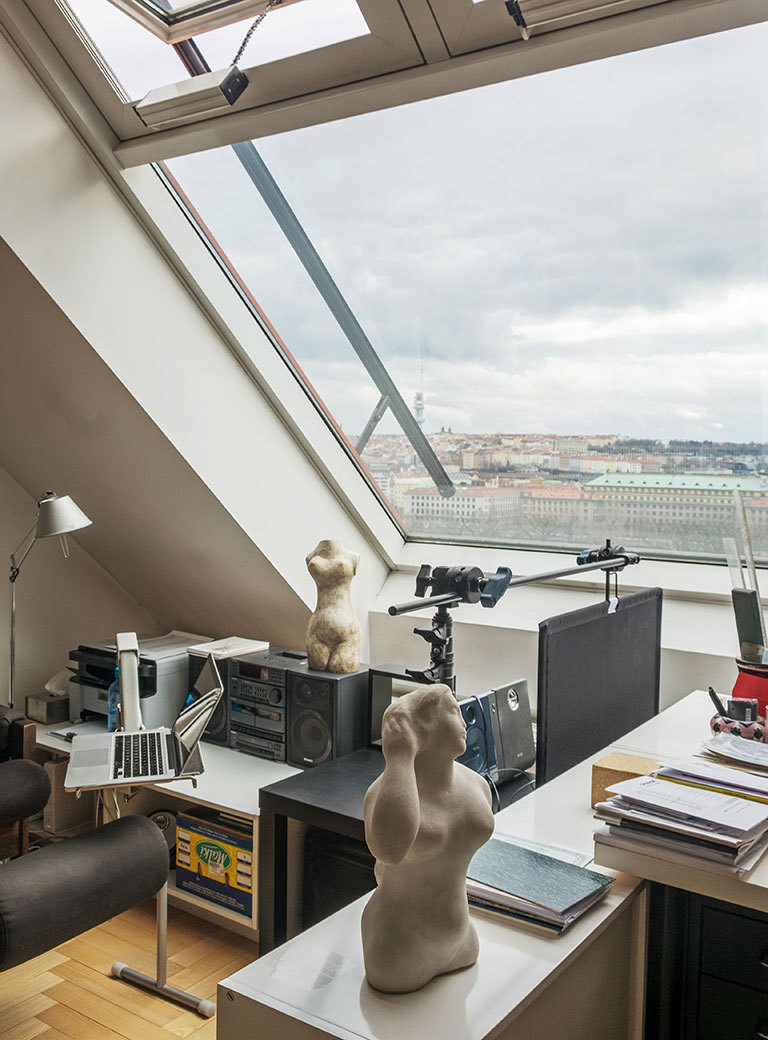
When we first approached you for an interview, you warned us that you had hardly any art left in your home, and that you had started to give most of it away.
It’s true I have actually sold many of the really important pieces in my collection. I am past my prime and have always considered collecting the affair of a single generation. What would my children do with my paintings? I don’t want them to feel obligated to take care of them, just because they meant something to me. I wanted to give them the chance to discover for themselves which art they feel attracted to. My daughter is in love with a couple of the paintings I own, so naturally they won’t be sold.
To whom are you passing on your collection?
I have decided to bequest the collection to art institutions so that it has a chance to live on, at least in parts. One ought not be too presumptuous about the interest of institutions. Museums and galleries are very selective in what they accept because their exhibition space is always limited. If you don’t have a world-class collection that can be shown as part of a permanent exhibition it may end up in the institution’s art storage.
You not only collect art, but also ceramics, right?
That’s correct. Again, I am about to bequest my entire collection of cubist ceramics to the Museum of Cubism, so it will stay intact. My collection of ceramics from Kostelec will be accepted by the museum in Kostelec.
Isn’t it hard to part from a collection into which one has invested a lot of heart-blood over many years?
Not at all. I gathered the collection for 18 years and wrote a publication about it. It was also exhibited. Now I am closing this chapter. This collection comprises ceramics from 1942 to 1948, it is not a topic which can be endlessly explored and is no longer attractive to me as a field of research. My wife and I can use more space for archiving her documentary film footage, my drawings, and of course my library. We look forward to having our space back. (laughs)
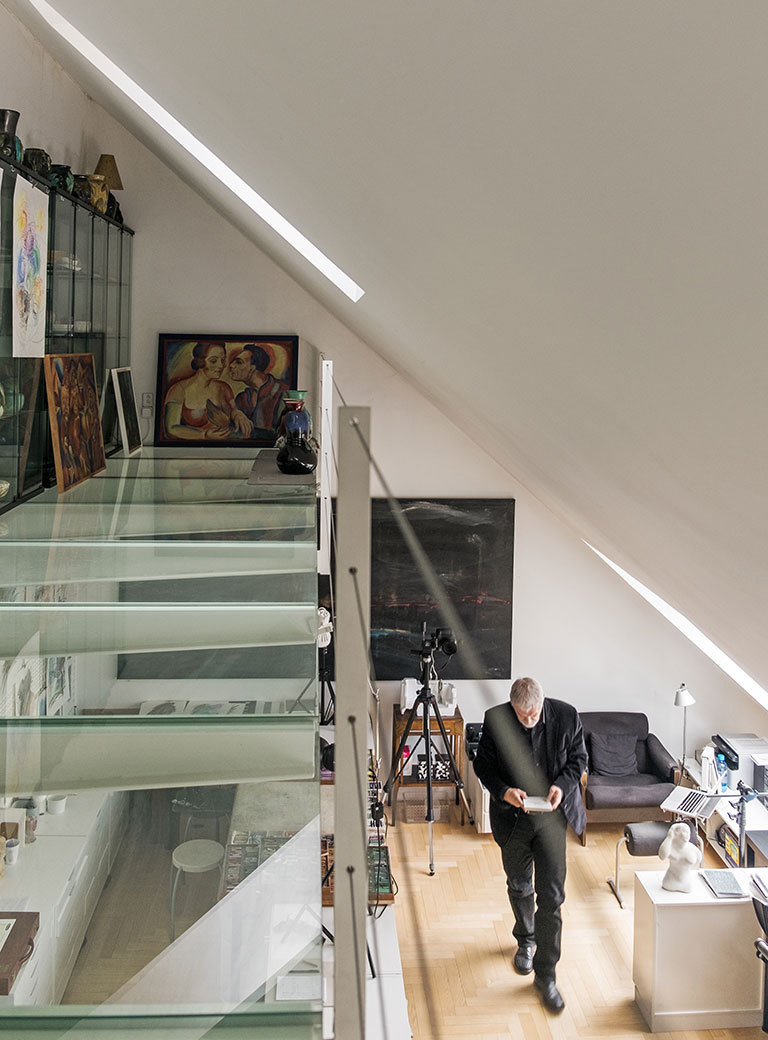
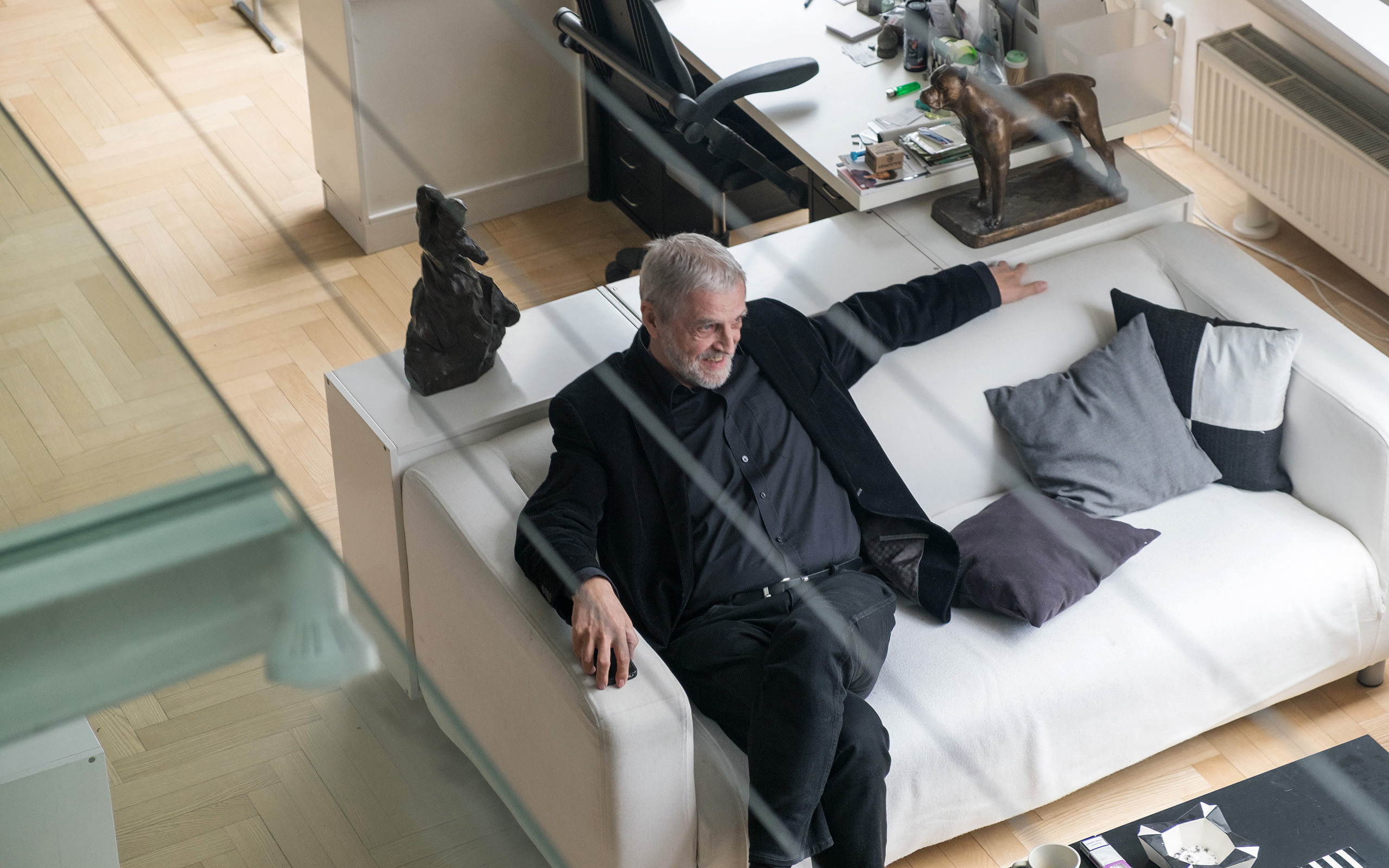
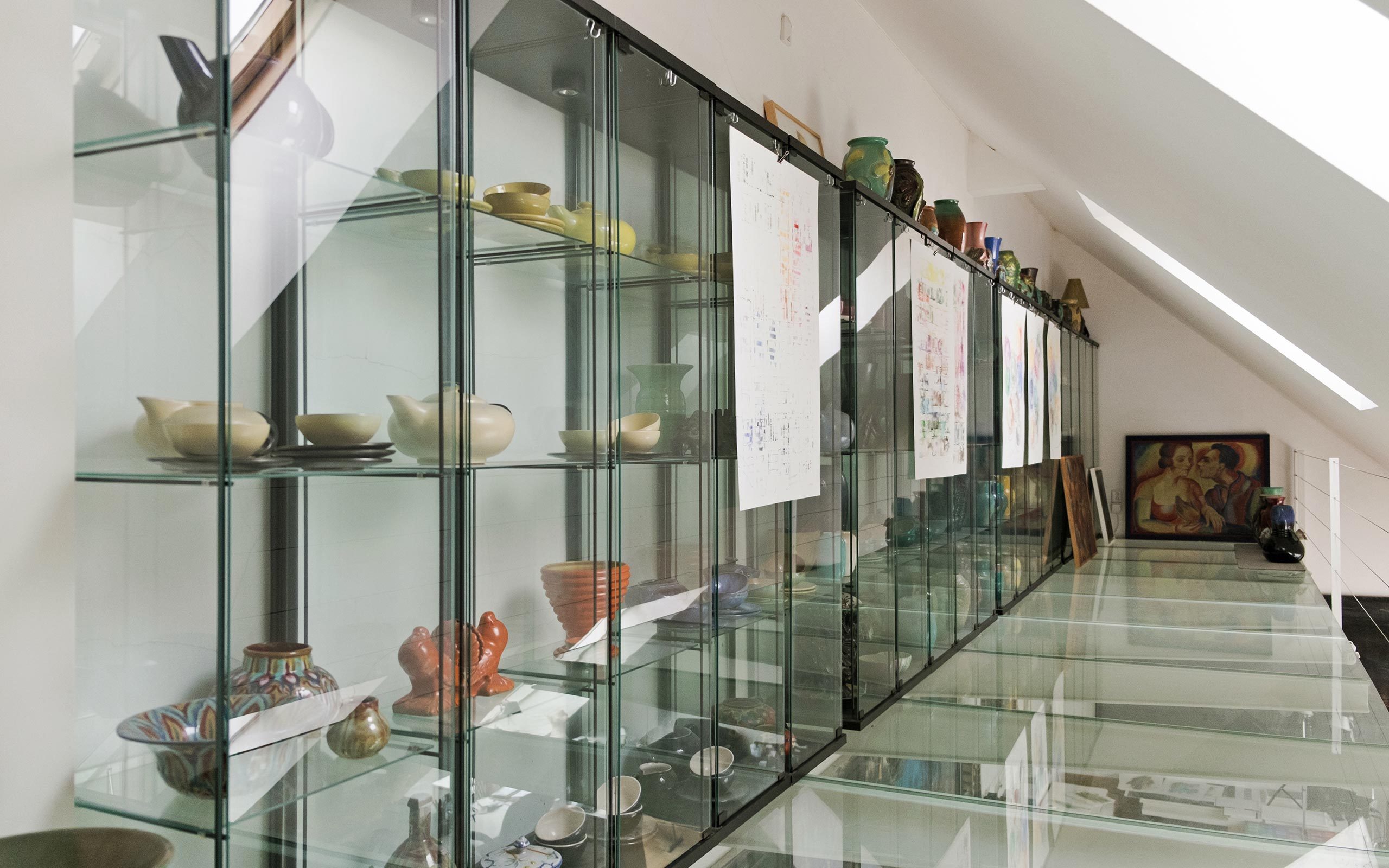
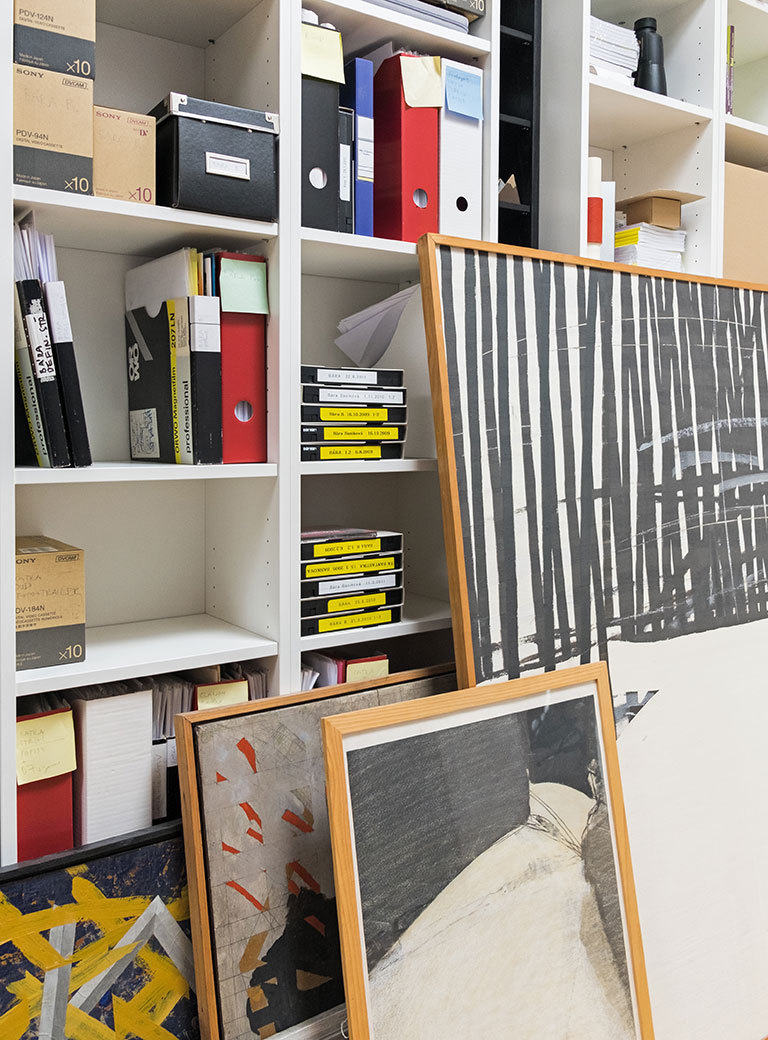
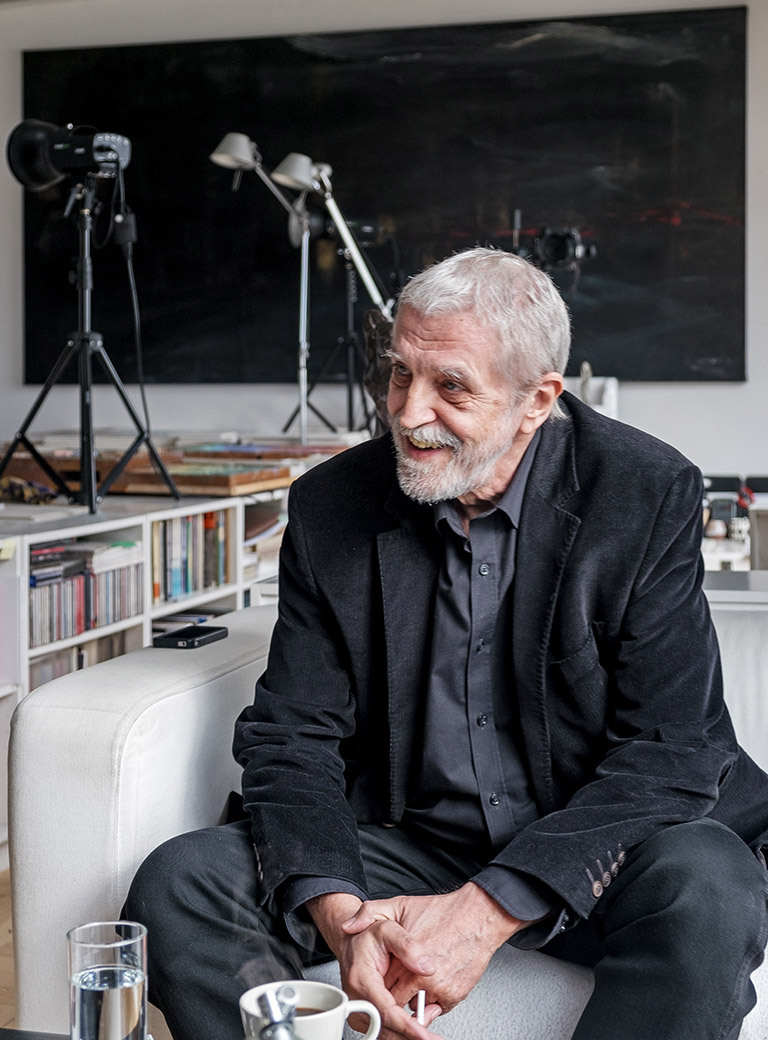
So you don’t think much of owning art, at least not for a long time?
Owning art is different from owning a car of a certain value or prestige. What you choose or don’t choose defines you as an individual. Every collector is driven by a desire of owning art. Taking ownership is a natural part of collecting. It is quite a different feeling to look at a piece of art in a gallery and to hang it on your own wall. Everyone feels different about owning art for a longer period of time. I can only speak for myself, but after several years some works may lose their spell and I feel the desire to replace them by new ones that I have discovered.
Is there a concept by which you hang art?
One way of hanging art is to group it by time periods. I own a collection of landscapes from the period between 1968 and 1989, the time of the Communist regime in Czech Republic. Many artists have let their collective feeling of oppression enter their work. By grouping the paintings one recognizes that similar metaphors emerge to express this sentiment. All the paintings are painted from the angle of a bowed head. There is no horizon, no perspective in them. And this perspective reflects this feeling very well that we all shared at that time. I mean that there was no horizon to look towards.
How did you personally experience the Communist period as an intellectual and critically minded person?
There was always a risk not to attract attention. People around me knew that I was not approving of the regime, I have been quite open about it, but I caused any trouble, so I could go after my business. Only once, when we were young and wild we tore the Russian flag. We were arrested and interrogated by the police risking to be expelled from school. I don’t remember how we talked our way out of it, but we got away. There was a time when my wife and I considered leaving the country. I could certainly have traveled more, might have had access to better literature, may have been more knowledgeable, even in my profession as an architect, but we decided to stay and built a life here despite these circumstances.
This may be a bit of a leap in time: You are very active on social networks for a person of your generation. Almost five thousand people are fans of your Facebook profile.
I am a bit surprised myself by that. In the beginning I knew nothing about Facebook. My younger colleagues from eAntik.cz had encouraged me to look into it as a way to promote eAntik, my online store. I started to publish news on eAntik in my profile once a week, but after a while I realized that I was enjoying more to write about other things. What I find interesting about Facebook is that it set the standards for a new literary form. There are a certain syntax and certain principles. It took a while to discover for myself what one writes on Facebook and what one doesn’t. I became so intrigued by these dynamics that I could not help writing a book about it.
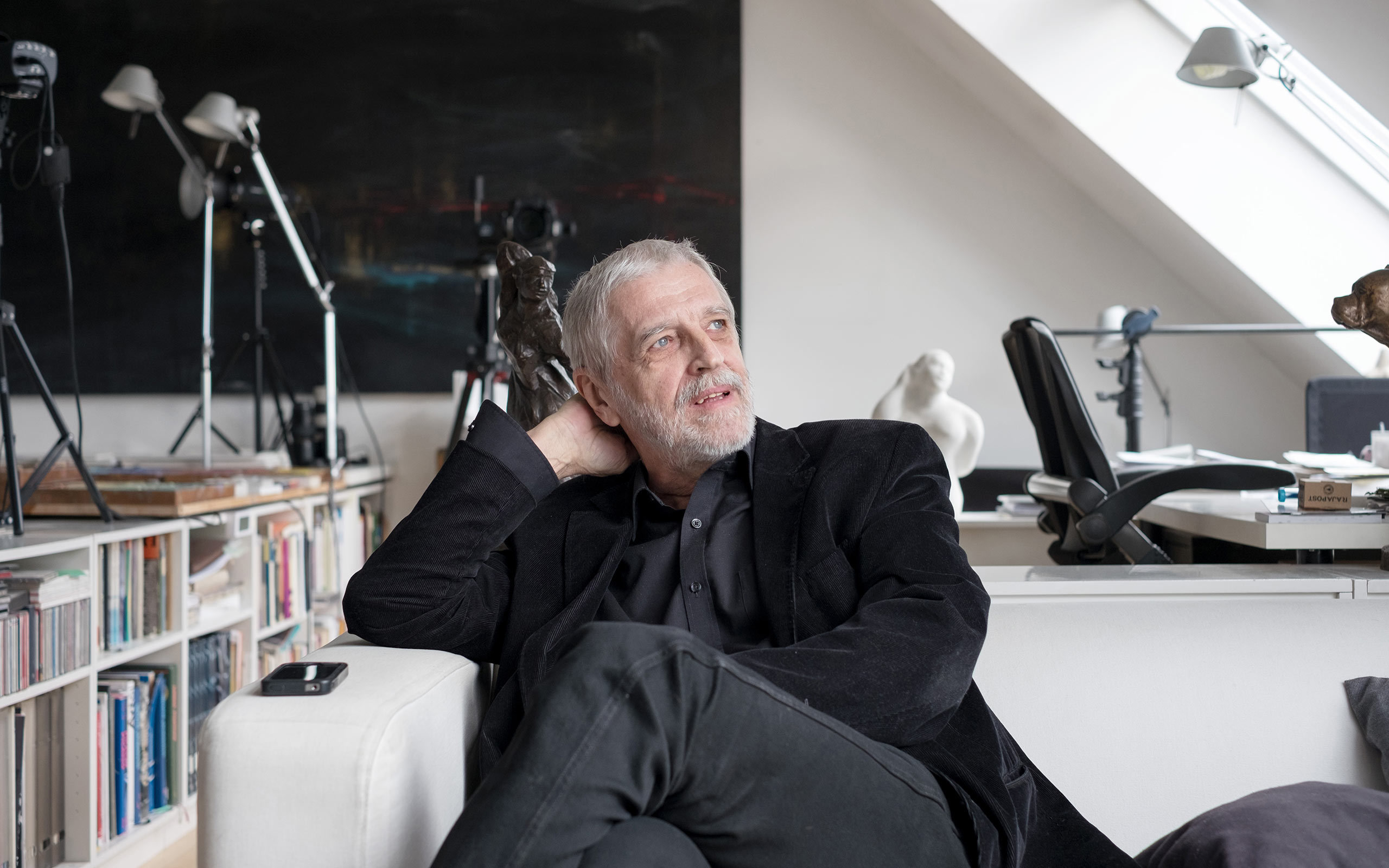
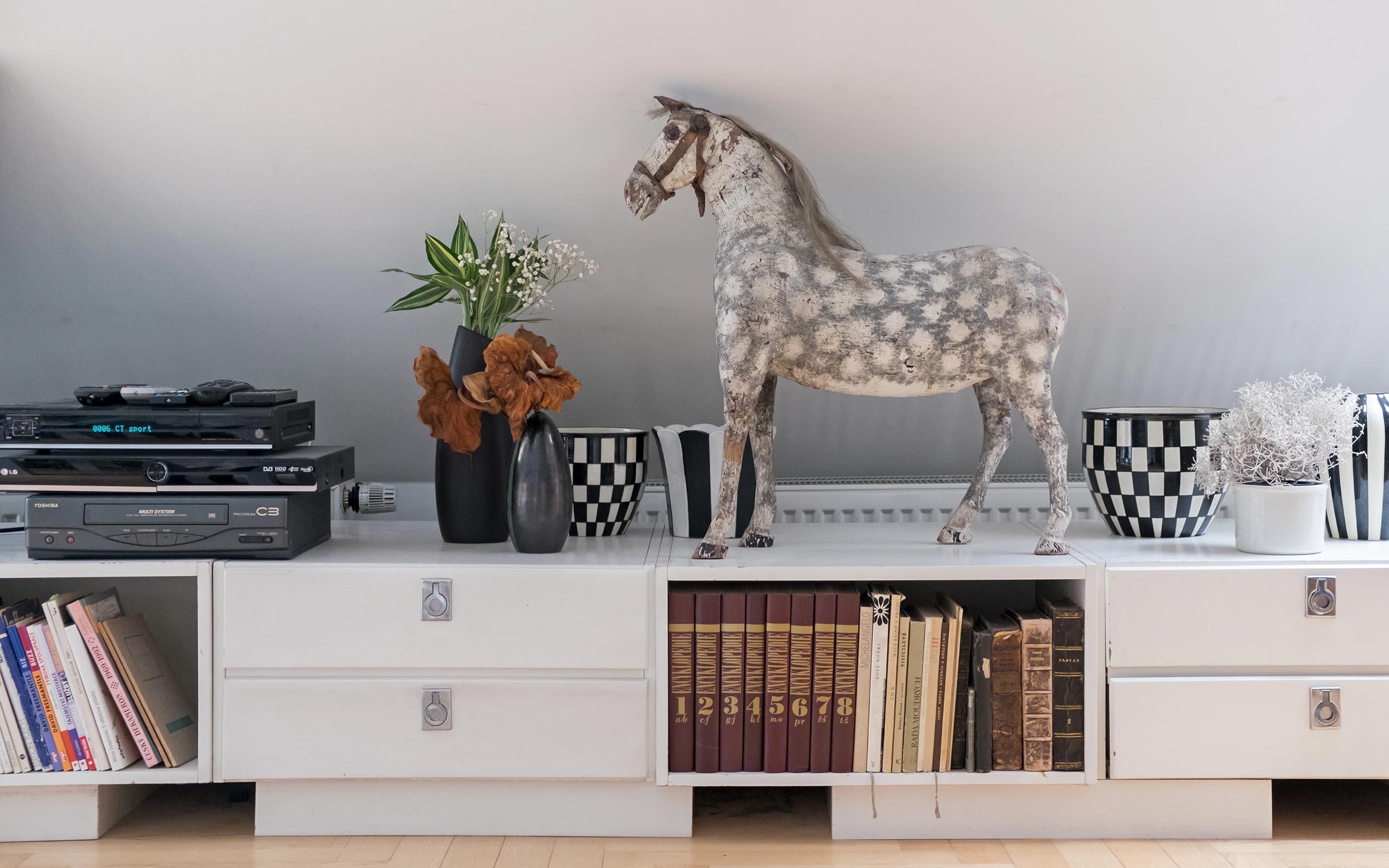
You are a man of many talents. What is your heart really burning for?
I don’t think it is one particular thing. What I really seek when I start something new is this mental state of flow which you get when you are completely immersed in what you are doing, that moment when you forget about time and the world. I have written six books in six years and I derived a lot of satisfaction from writing. I’ve spent a long time refurbishing and redesigning the house, which is now also the home of my children and their families. It wasn’t always an easy process and it involved a lot of disputes with the authorities, because the building is subject to historic preservation. But it was important to me. Right now I get the most out of drawing.
You are trying yourself as an artist?
It is not my goal to change the history of art or to make a huge impression on curators. (laughs) My main motivation is to explore how it feels to create art, and to observe myself doing it. In the beginning, I thought that, in order to produce astonishing art, I had to work with a six-foot canvas. But then I figured out that to be able to confront one‘s self doubts, one’s hesitations and inadequacies, one does not need a large canvas. Already a small piece of paper can humble you. I use pastel colors, because they are practical, fast and comfortable to handle. I don’t need anything else.
How was this feeling, to step into an art supply store and say: I am an artist, which supplies do I need?
(laughs) I had the idea at end of the year and was keen to put it into practice as soon as possible. So I called up an art supply store during the holidays; it was closed for inventory. Surprisingly, however, somebody answered the phone. The shop’s staff was kind and prepared a basket of utensils to get me started for the time being, which I could pick up the day afterwards.
How are you getting on with your art?
I feel a little stuck at the moment. So I will pursue it a bit further and see where it goes, but my main objective is to write a publication about the experience. It seems to me an interesting contribution to art literature. A lot has been published about artists and about art in general, but very little has been written about the act of creating art. Art historians and curators usually have few experience of creating art themselves, and artists know little about what lay people are curious about.
Do you ever hang your own art at home?
Yes, but it was never meant to be a real "exhibit". Here, for example, I have put a display cabinet between one of my pieces and other works making clear that I am not putting my work on the same level.
Is there a piece of advice that you would give to someone who is new to collecting?
Don’t wait too long to get started. And don’t think too much about the money you will invest over time. Unlike buying a car or a pair of shoes, whose value degrades with age, one owns something of sustained value. A work of art rarely loses its value. And even if it is not increasing in value, it will be on your wall and make you happy every time you pass by it. Looking at it this way, the risk involved is very low.
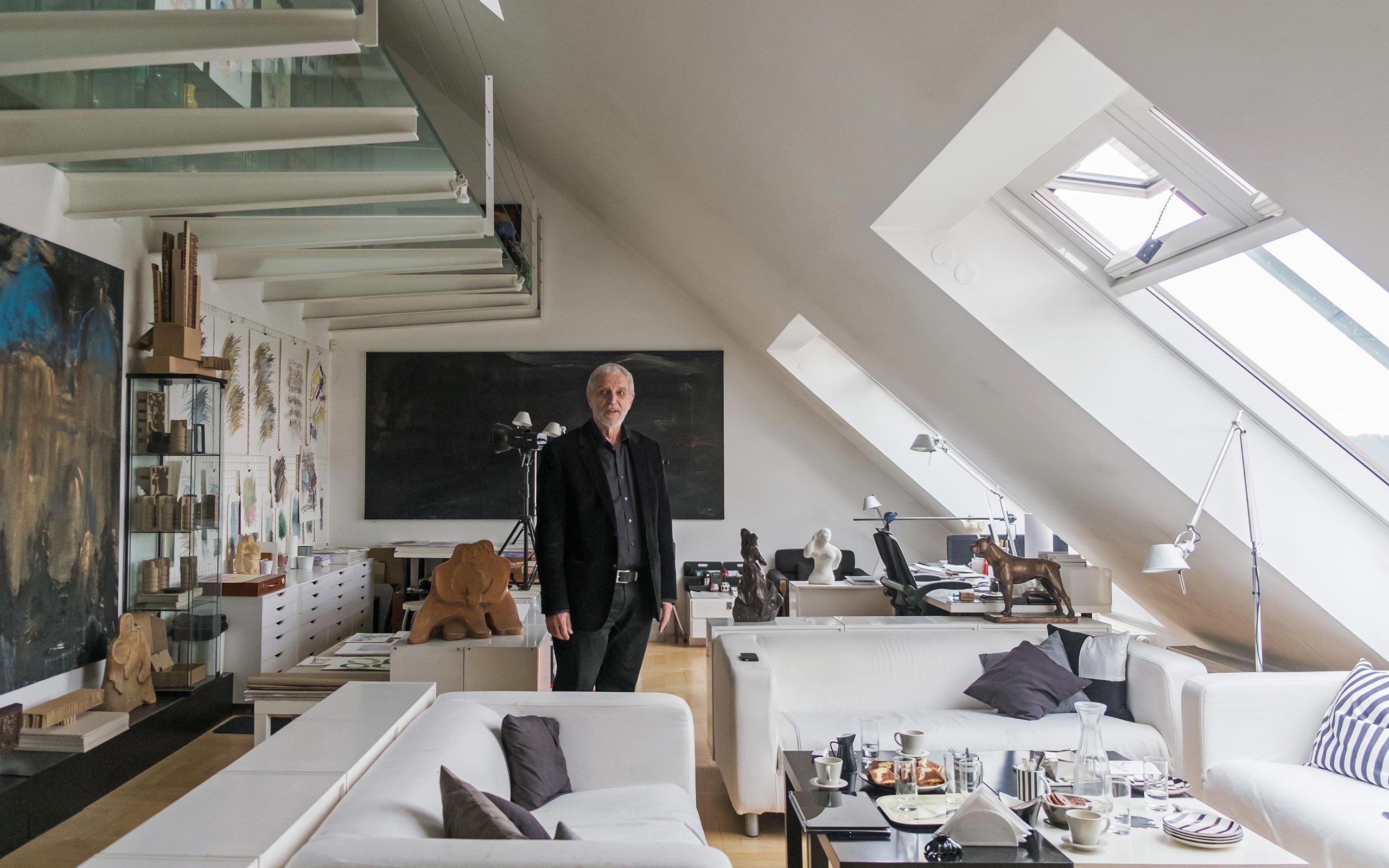
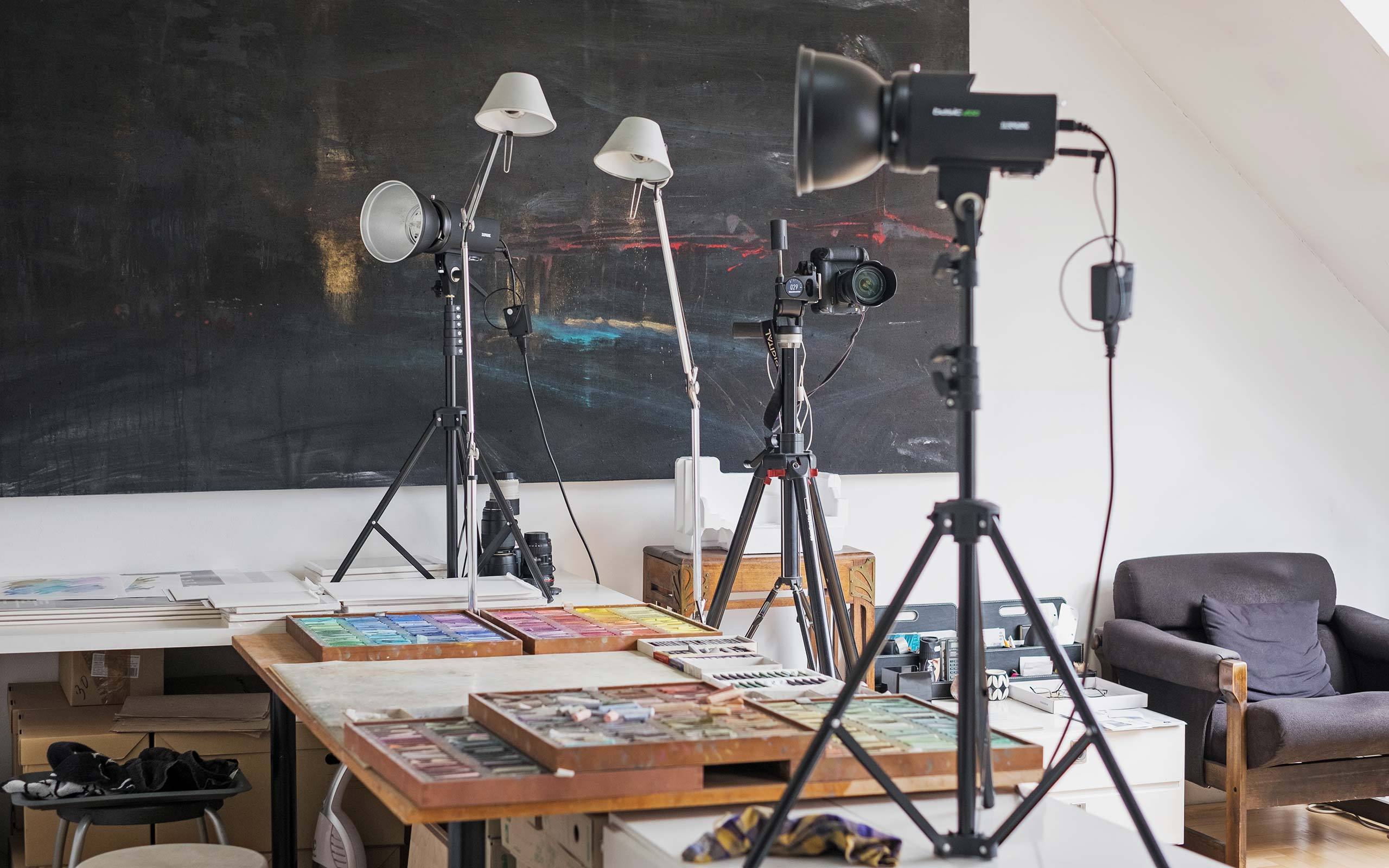
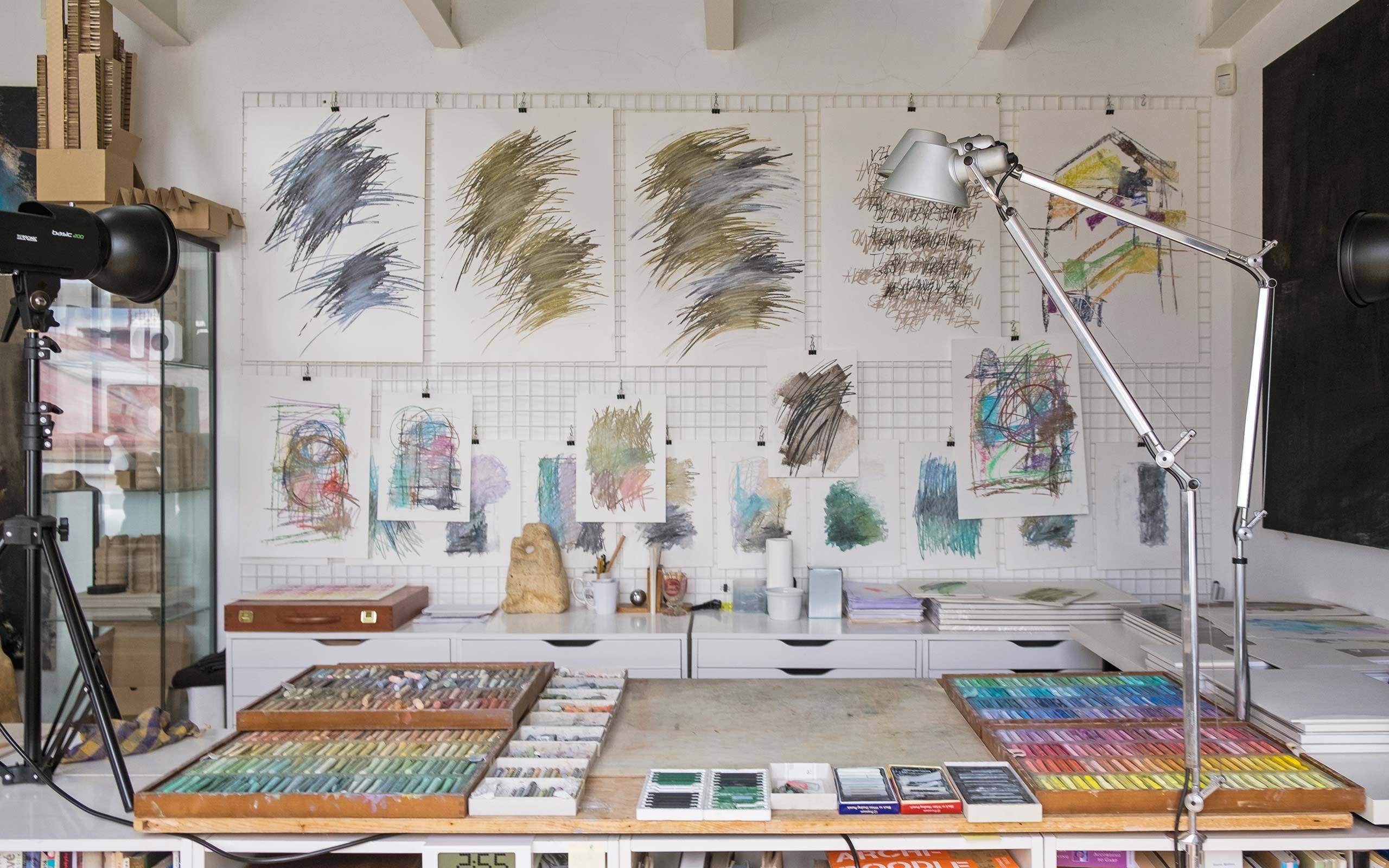
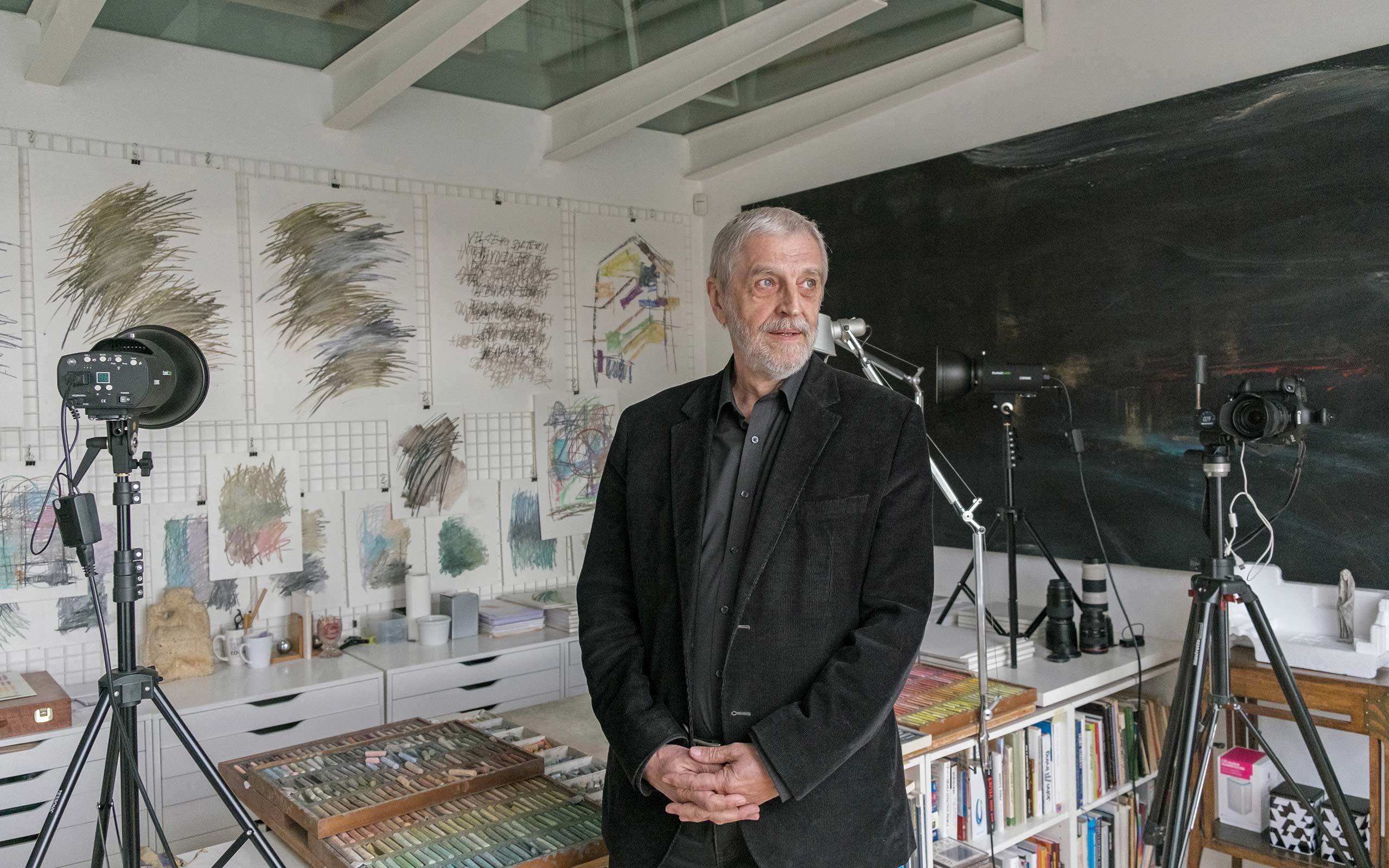
Interview: Sebastiána Hájková, Florian Langhammer
Photos: Maximilian Pramatarov
For better readability the spelling of some words have been adapted for this entry, as opposed to their original spelling in Czech.


